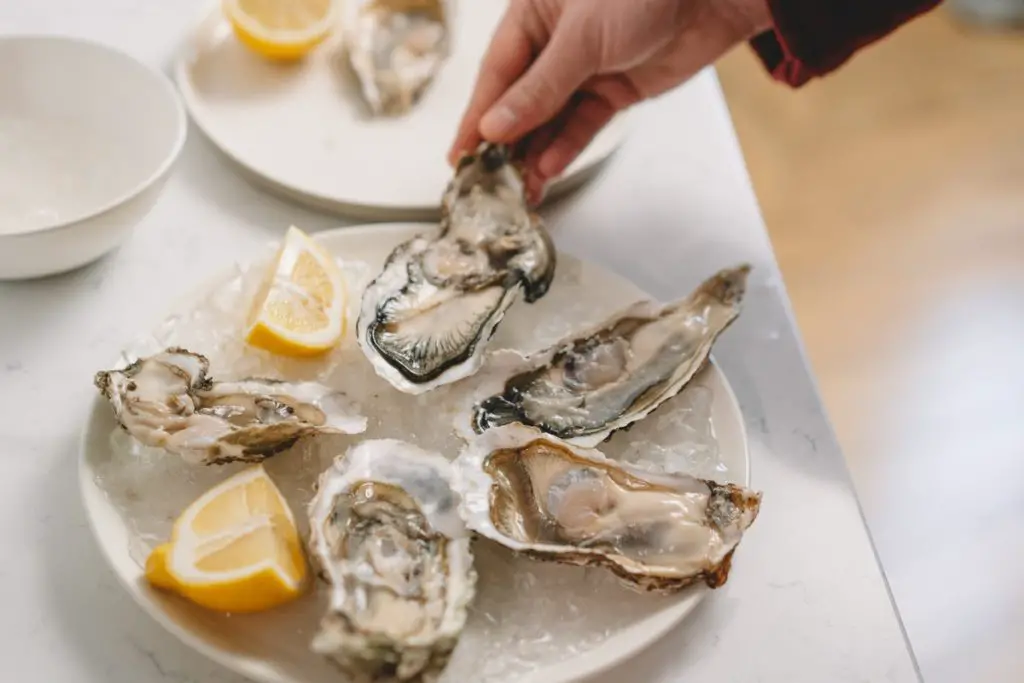Seafood is one of the most widely eaten foods on the planet. They are a staple of billions of people’s diets and are often considered some of the healthiest foods to be eaten as well.
Plus, Anyone who has been fortunate to eat their seafood along a shorefront or in a seaside town knows how much better it tastes when it is eaten close to the ocean!
Seafood, as its own food category, is an incredibly diverse group of animals that make up this.
You obviously have your true fish to eat, from your salmon to your cod, to your sardines, to your mackerel, and so on and so forth.
But there are plenty of other animals that make up what we call seafood. Mollusks, for example, are one of the biggest groups of animals that are eaten as seafood.

This is easy enough to tell when they are served to you for eating. No one is going to confuse your carp for an octopus, a squid for your whitebait, or even a snail for your prawn or shrimp.
However, things start to get a little trickier once we come to shelled kinds of seafood. More specifically, a lot of people seem to struggle when it comes to clams and oysters.
In fact, some people might even mistake one of the other, or see them both as part of the same species!
This isn’t too surprising, especially if you don’t know much about your fishier foods.
Still, eating an oyster is a totally different experience from eating a clam, and it’s important to understand that when you’re considering which one you would rather eat tonight.
That’s why we’ve created this little handy guide. To help you distinguish between oyster and clams, and to help you understand the differences between these two shelled treats to feast on.
Without further ado, let’s dive in!
A Quick Introduction To Oysters
‘Oyster’ is the term given to several species of shelled mollusks that share several features in common.
All species of oysters tend to have very jagged, irregular shapes when it comes to their shells, and they mainly exist by filter-feeding through their gills, feeding on plankton.
They are an essential part of their ecosystems where they grow, as they provide homes to thousands of small species of animals, which in turn helps feed larger animals.
They settle on hard rocks or surfaces, and often grow in massive colonies with other oysters, often called ‘oyster reefs’. Oysters almost always live in saltwater, with very few exceptions.
Because of this, they are usually vital parts of many sea creatures’ diets.
A Quick Introduction To Clams
‘Clam’ is actually a catch-all term for a group of different types of bivalve subclass of mollusks.
They tend to spend most of their life living at the bottom of the sea or river beds where they live, half-submerged under sand and silt as they filter food through their shells.
The shells of this mollusk surround the animal and can be controlled using what are known as two adductor muscles to help open and close the shells when the clam needs to retreat to defend itself.
Whilst most species of clams tend to only live a few years out in the wild, some have been found to have lived extraordinarily long times.
One example of an Icelandic species of clam was found to be over 500 years old!
Animal Classification
This is a difficult difference to tell if you aren’t an expert in marine biology or evolution, but it is an interesting difference that distinguishes these two different species.
To start with, while both oysters and clams are part of the wider family of animals and organisms that we call ‘mollusks’ and the bivalve subclass, both come from the ‘pteriomorphia’ line of mollusks, they are only distantly related to each other.
The oyster, for example, comes from a different line of mollusk species than most clam species come from.
Some evolutionary lines might be tens, even hundreds of millions of years apart from each other on the evolutionary tree of life!
However, this difference isn’t going to help most people distinguish between the two types of shellfish, even if it is a fascinating marine biological fact.
For a generally better system of identifying them, we have to turn elsewhere.
Appearance And Shell

So, often the easiest way of telling the difference between an oyster and a clam is to simply look at their shells.
Because both the way they use their shells and their chemical makeup is different, the shells of these creatures form very different patterns from one another, making them quite easy to tell apart.
For clams, the easiest way to pot them is through their uniformed shell.
Many clams have shells that are very smooth to touch, especially when compared to other rocks and materials they are found around, although there are some species of clams that have deep bumps and ridges.
However, all clam’s shells are pretty uniform, and the two pieces that make up the shell close together very neatly, and tend to be a pale white or tanned color.
Oysters, meanwhile, have large deposits of calcium that build up on the outside of the shell, which results in a very rough and bumpy texture forming on the outside.
General Habitat
Clams and oysters can also be told apart by where they are usually found in the water.
For example, with very few, if any exceptions, oysters can only be found in salt and seawater.
Not only that, but all species also need to plant themselves on a hard surface whilst they are still in their larval stage and will stay there for much, if not all their lives.
Claims on the other hand can grow in both salt and freshwater, and can often be found living up streams and rivers across the world.
They also tend to live in soft sediments at the bottom of rivers and seabeds, rather than on rocky formations as oysters do.
Nutritional Benefits And Taste
Probably the thing that most people care about when it comes to differentiating these two animals, is their taste and nutritional benefits.
Clams tend to be quite chewy when biting into them, and often have a pungent and briny taste and smell to them.
They are high in vitamin C and other minerals the human body needs, such as iron and manganese.
They are usually served and eaten in soups, stews, and chowders, and sometimes steamed.
Oysters meanwhile have a very smooth texture in the mouth, and almost feel like they are coated in butter as they move in and around your mouth.
It’s quite common to slurp an oyster down as you eat it, whether they are eaten fried, grilled, or even raw.
They are high in minerals such as potassium, zinc, and phosphorus too.
Other Differences
Many other differences separate these two animals.
Probably one of the biggest differences between the two eaten animals is the ability to make and grow pearls.
Clams do not have the means to grow a pearl within their body, whilst oysters, perhaps thanks to the large amounts of calcium found in the animal, produce some of the finest pearls that can be found in nature.
Although technically, there are plenty of species of shelled mollusks that can create pearls of some kind, few have the same qualities and value as oyster pearls do.
Conclusion
So, there you have it!
Although oysters and Clams can seem like very similar things that we eat at face value, once we take a closer look, we often find that there is quite a lot to differentiate them from each other.
Now the only thing you have to figure out now is which one you want to eat tonight!

